Welcome to the IAFC HOT Initiative
This toolkit, created by the Fire & Life Safety Section (FLSS), is designed specifically for fire chiefs to address the hazards associated with Home Oxygen Fire Hazards. It emphasizes the importance of installing thermal fuses as a critical component of all Home Oxygen Therapy (HOT) devices.
HOT Home Oxygen Thermal Fuse
As part of our initiative, we are proud to introduce the Home Oxygen Thermal Fuse (HOT) program. This safety measure protects individuals using home oxygen systems by automatically shutting off the oxygen supply in the event of excessive heat, significantly reducing fire risks.
Contribute to this National Tool
Please consider participating in our National Survey, which gathers vital insights to inform best practices and enhance community safety. We need feedback on current challenges and innovative solutions within the fire services that will contribute to the following:
- Improving standards and practices in the fire service.
- Accessing valuable data that can guide your department’s strategies and operations.
- Connecting with fellow fire service professionals and share experiences
Contribute to this resource by adding your data
Explore the Data
After completing the survey, explore our interactive map dashboard, which displays important data and trends from fire departments nationwide. This tool helps visualize the impact of your contributions and promotes informed decision-making.
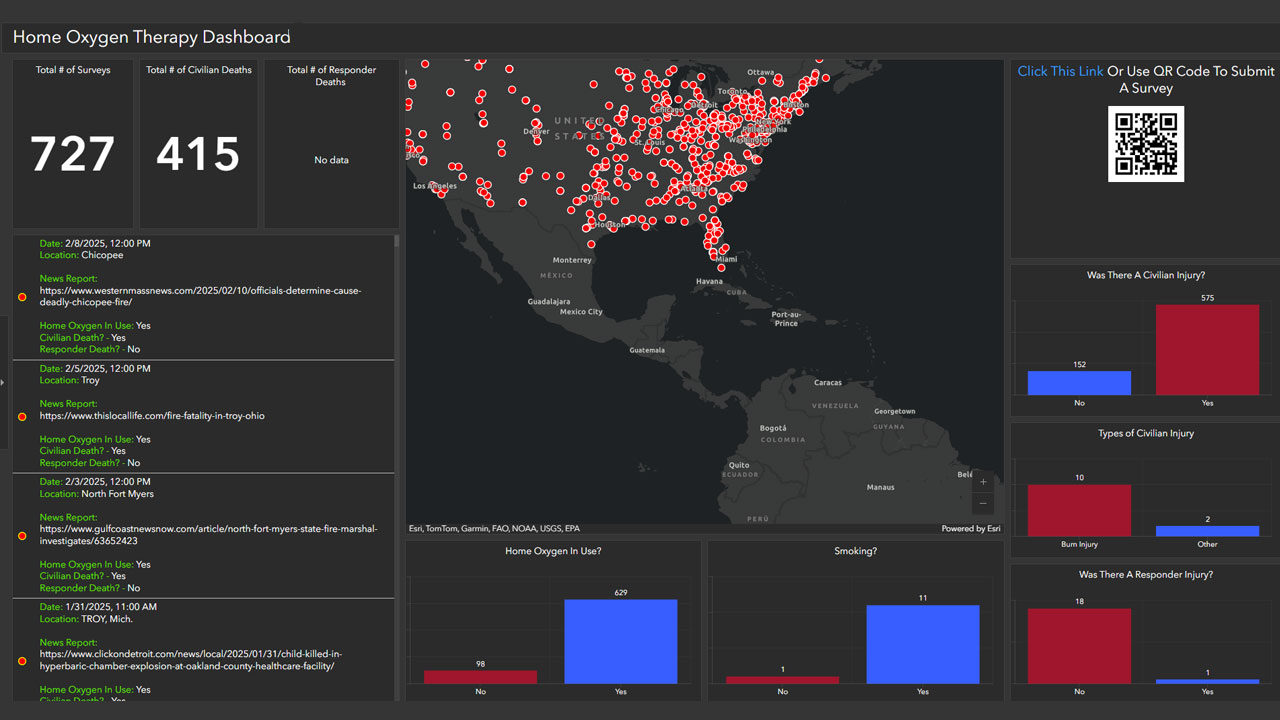
Key speaking points for fire departments.
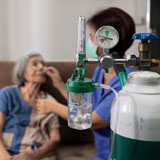
- Statistics on Home Oxygen Fire Hazards:
- Approximately 1.5 million individuals in the US are on home oxygen.
- Up to 750,000 people smoke while on home oxygen.
- Home oxygen therapy fire related deaths occur every 4 days
- NFIRS data shows that smoking contributes to 30% of US fire deaths and 27% of home fires.
- Involvement of DME/HME Providers:
- Four national providers service between 600,000 to 800,000 Medicare patients on home oxygen.
- 46% of home oxygen providers report serving patients affected by smoking-related incidents.
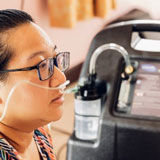
- Thermal Fuse Technology:
- Approved by the FDA, thermal fuses cost under $5 each and can prevent oxygen-related fires.
- A UK case study demonstrated a significant reduction in fatalities with mandated thermal fuse use.
- Regulatory Actions:
- CMS reimbursement under HCPCS code E0700 for thermal fuse use in Iowa and Washington.
- VA mandate in 2018 required the use of thermal fuses for patient safety.
- The Joint Commission's National Patient Safety Goals emphasize identifying risks associated with home oxygen therapy.
- Expected Results:
- Anticipated reduction of US fire deaths by 12-15% with thermal fuse installations.
- Significant cost savings for Medicare related to medical costs for burn patients.
- Requests for CMS and Elected Officials:
- Request for CMS to establish a specific HCPCS code for thermal fuse reimbursement.
- Adopting policy mandates similar to the VA mandate of 2018.
- Addressing legislative and procedural challenges to ensure reimbursement for thermal fuse installations by DME/HME providers.
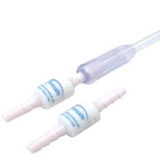
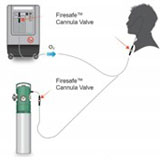
By utilizing these key points, fire Chiefs can effectively communicate the risks associated with home oxygen fires and advocate for implementing preventive measures such as thermal fuse technology to enhance safety and reduce fire-related incidents.
The Risks of Smoking with Home Oxygen: A Message from IAFC President Chief John S. Butler
This video sheds light on a critical issue: the growing number of fires and fatalities caused by the combination of smoking and oxygen usage. Chief Butler.
Home Oxygen Burn and Injury Fire Safety
The International Association of Fire Chiefs (IAFC), by joint recommendation of the Fire & Life Safety Section (FLSS); Safety, Health and Survival Section (SHSS); Emergency Medical Services Section (EMSS); Company Officers Section (COS); Volunteer and Combination Officers Section (VCOS), developed a position statement and adopted it July 2022. So, fire chiefs and fire safety professionals can respond to and educate the public on the importance of preventing burn injuries and deaths by using home medical oxygen.
Problem Statement
Due to the concerning prevalence of preventable injuries and their associated high morbidity and mortality rates, the IAFC FLSS seeks to educate communities and stakeholders about home oxygen therapy (HOT)-related burns.
IAFC Position
Home Oxygen Burn and Injury Fire Safety
FLSS Excellence Award
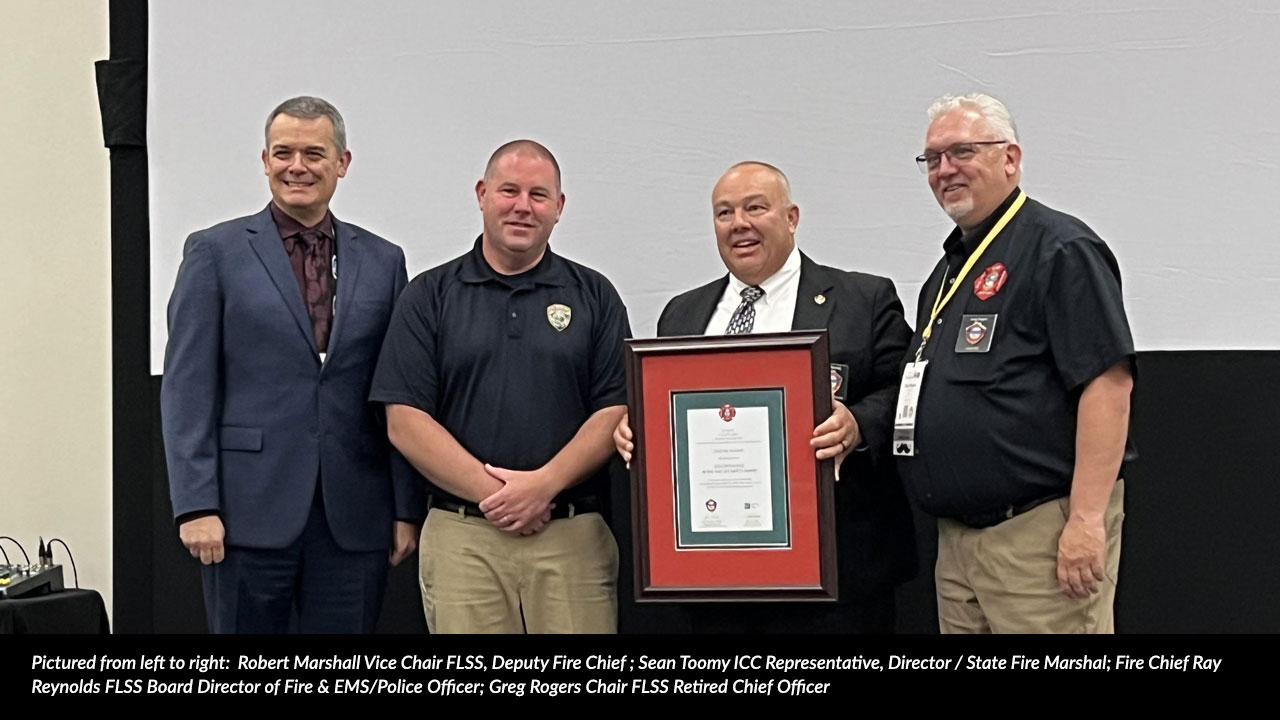
Fire Chief Ray Reynolds was Honored for Excellence in Fire and Life Safety for his work nationally on Home Oxygen Safety.
 The International Association of Fire Chiefs’ Fire & Life Safety Section (FLSS) provides leadership and guidance for chief fire officers and managers who are passionate about reducing the risk of injury, loss of life, and property loss through practical community risk reduction efforts. The section offers resources, information, and assistance related to education and outreach within their departments.
The International Association of Fire Chiefs’ Fire & Life Safety Section (FLSS) provides leadership and guidance for chief fire officers and managers who are passionate about reducing the risk of injury, loss of life, and property loss through practical community risk reduction efforts. The section offers resources, information, and assistance related to education and outreach within their departments.
Resources
ISO 19211:2024 Anesthetic and respiratory equipment — Fire-activated oxygen shut-off devices for use during oxygen therapy (ISO 19211:2024 - Anesthetic and respiratory equipment — Fire-activated oxygen shut-off devices for use during oxygen therapy)
The document outlines the essential aspects of fire-activated oxygen shut-off devices, which are designed to enhance safety during oxygen therapy by automatically cutting off the oxygen supply in a fire. Key focus areas include:
- Safety: Ensuring the device effectively prevents the spread of fire.
- Cleanliness: Maintaining hygiene standards in medical environments.
- Performance: Guaranteeing reliable operation under defined conditions.
- Suitability of Materials: Using materials that can withstand fire-related risks.
- Testing: Implementing rigorous testing protocols to validate device functionality.
- Identification: Properly labeling devices for easy recognition.
- Information Supplied: Providing necessary details to users for effective operation.
These elements are critical for the device's effectiveness in minimizing fire hazards associated with oxygen therapy.
Taking responsibility to help reduce the risk of fire Why Thermal Fuses are Essential for Oxygen Safety (homecaremag.com)